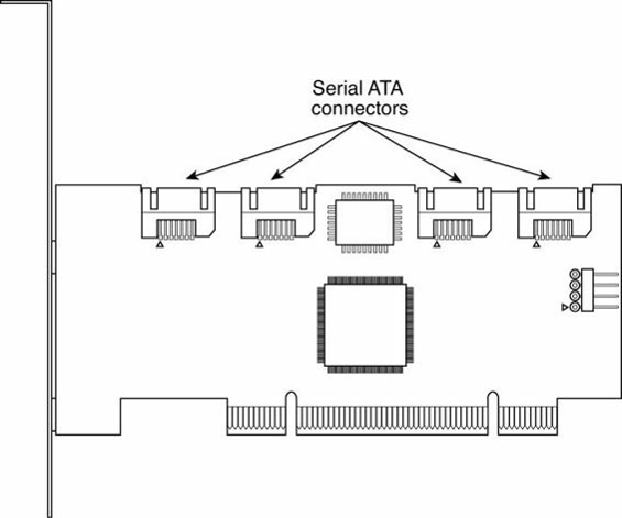Hardware Reference
In-Depth Information
Figure 7.17. Typical 4-port SATA RAID host adapter.
Advanced Host Controller Interface (AHCI)
SATA was designed not only as a replacement for PATA, but as an interface that would evolve into
something with many more capabilities and features than its predecessor. Initially, compatibility with
PATA was one of the most important features of SATA because it enabled a smooth and easy
transition from one to the other. This compatibility extends to the driver level, allowing SATA
devices to use the same BIOS-level drivers and software as legacy PATA devices.
Although the intent of SATA was to allow an easy transition from PATA, it was also designed to
allow future growth and expansion of capabilities. To accomplish this, an enhanced software
interface called the
Advanced Host Controller Interface
(AHCI) was initially developed by the
AHCI Contributor Group, a group chaired by Intel and originally consisting of AMD, Dell, Marvell,
Maxtor, Microsoft, Red Hat, Seagate, and StorageGear. The AHCI Contributor Group released a
preliminary version of AHCI v0.95 in May 2003 and released the 1.0 version of the specification in
April 2004. You can download the latest version (1.3, released in 2008) from Intel at
AHCI provides an industry-standard, high-performance interface to system driver/OS software for
discovering and implementing such advanced SATA features as command queuing, hot-plugging, and
power management. AHCI was integrated into SATA-supporting chipsets in 2004 and is supported by
AHCI drivers for Windows. The main idea behind AHCI is to have a single driver-level interface
supported by all advanced SATA host adapters. This greatly simplifies the installation of operating
systems, eliminating the need for custom SATA drivers for each manufacturer's SATA host adapter.
For example, Windows Vista and later include AHCI drivers and automatically support any advanced


